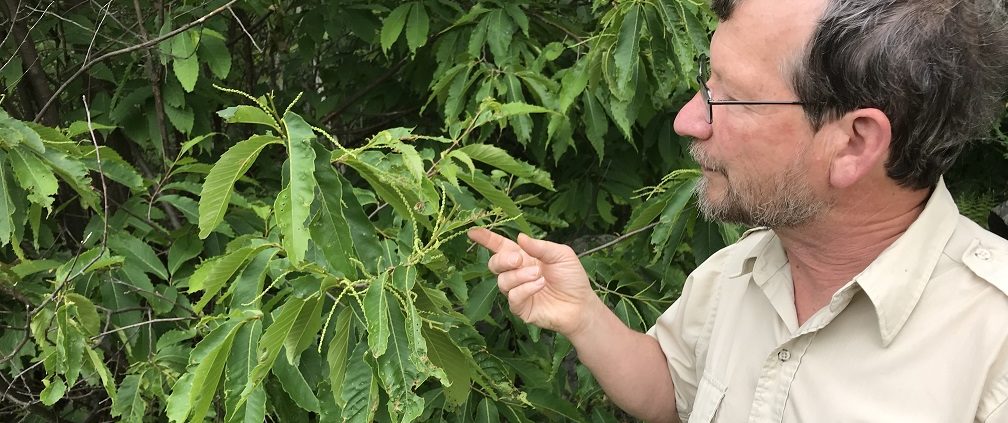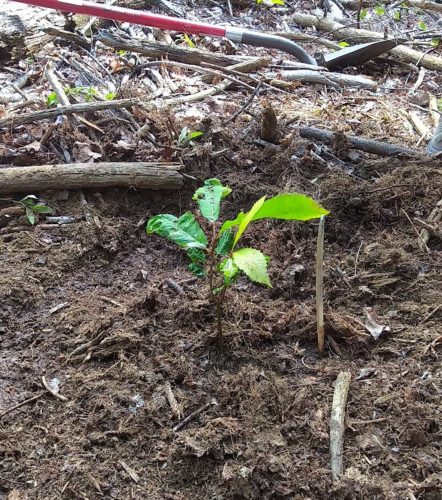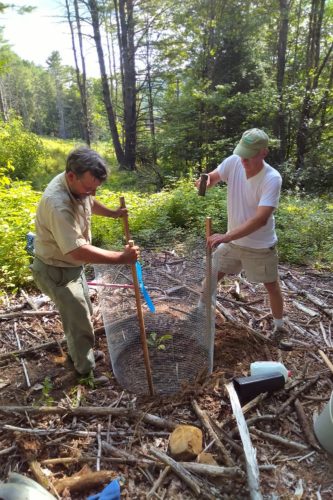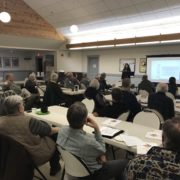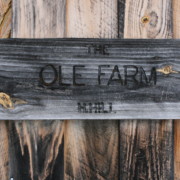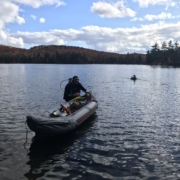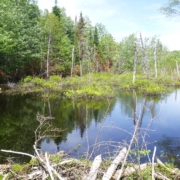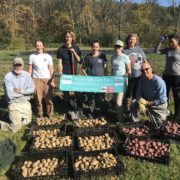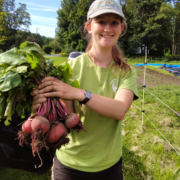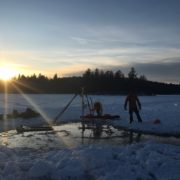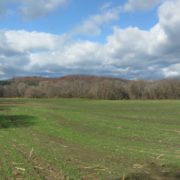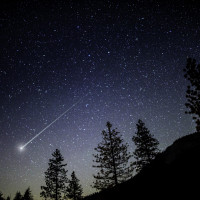A New Generation of American Chestnut Trees at Up on the Hill
When UVLT acquired the 990 acre Smith Pond Shaker Forest in late 2015 we knew that we were getting hundreds of acres of wildlife habitat, regenerating forests, shaker history, and a beautiful pond. We knew we were protecting an important place. What we didn’t know was that the property also harbored a fascinating secret – American Chestnut Trees grow there.
Upon finding out that we had not only live American Chestnut Trees- but trees producing nuts – UVLT embarked on our Chestnut Challenge. The Chestnut Challenge was a months long hunt for American Chestnuts on the Smith Pond Property to find and map as many as we could. Participants in the challenge mapped 16 trees in total (more information about the Chestnut Challenge at Smith Pond can be found here). The Chestnut Challenge sparked an interest in Chestnuts for UVLT staff, and gained us publicity that reached all the way down to Plymouth NH.
Doug McLane, of the American Chestnut Foundation, got in touch with UVLT and wanted to see our Chestnut trees at Smith Pond. A trip to Smith Pond and a follow up trip to his chestnut orchard in Plymouth resulted in UVLT being given four American Chestnut seedlings to plant. Doug’s seedlings are started from seeds that he collects on his journeys throughout New England from trees that are 100% American Chestnut and wild grown. The hope is that since these trees are still around in the wild they might be resistant to the chestnut blight that has nearly wiped out the species in our forests.
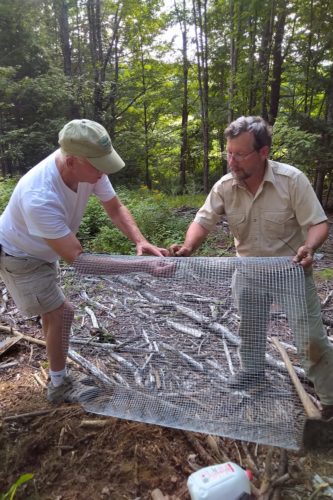
Vice president of Stewardship and Strategic Initiatives John Roe and UVLT Board Chair John Gerstmayr getting the mesh cage ready to put over the seedling to protect from deer browse.
After careful consideration, UVLT’s Vice President of Stewardship and Strategic Initiatives, John Roe came up with a plan. We would plant the seedlings at our Up on the Hill Conservation Area in Charlestown, NH. The Up on the Hill property is actively managed for timber production and has a clear cut area near the Richardson Road entrance. Siting the Chestnut seedlings in the clear cut was and important decision because of the connections between American Chestnut trees and mycorrhizal fungi. Mycorrhizal fungi develop in a symbiotic relationship with many trees in the northern hardwood forests, helping them to move around and take up nutrients, so the area having very recently been a forest stand meant that it was more than likely that the fungi was still in the soil.
Now that they’re planted we will wait and see. If we can keep the deer away for 3 to 5 years using the mesh wire enclosures that we placed around the seedlings they will be able to grow enough to begin to bloom and even produce fruit.
You can read all about our chestnut planting project here.
More information about the history of the American Chestnut Tree in this area can be found here.

